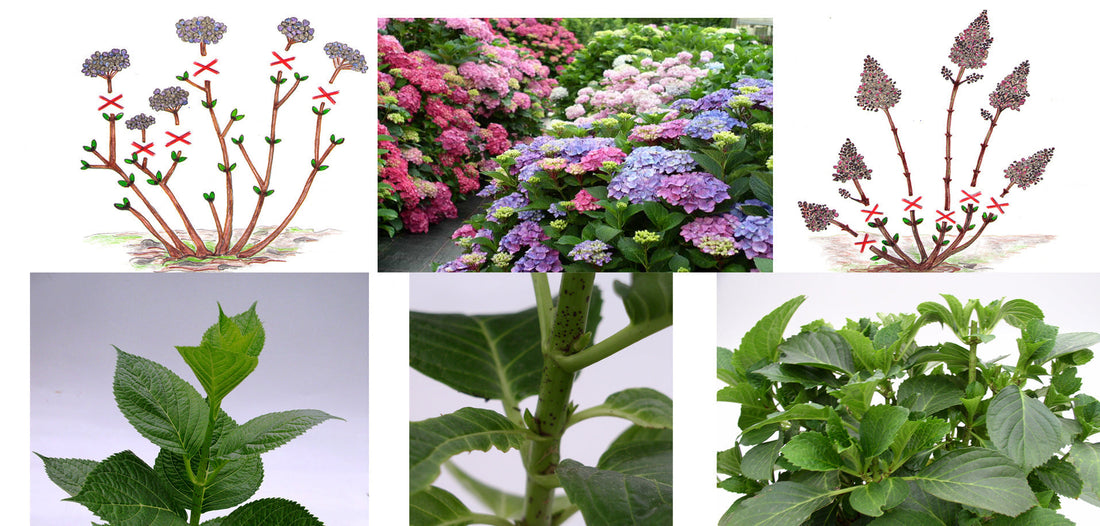Pruning hydrangeas – timing & methods for bigleaf and panicle hydrangeas
Proper pruning is crucial for keeping your hydrangeas healthy and blooming profusely. Depending on the species (largeleaf hydrangea vs. panicle hydrangea), the timing and pruning technique vary considerably. In this article, you'll learn everything you need to know about spring and rejuvenation pruning, practical tips for optimal bloom performance, and additional internal links to care tips .
1. Two cutting groups – last year’s vs. this year’s wood
Hydrangeas can be divided into two main groups :
- Bigleaf hydrangeas (Hydrangea macrophylla) : bloom on the previous year's wood .
- Panicle hydrangeas (Hydrangea paniculata & arborescens) : Bloom on one-year-old wood .
2. Pruning technique for hydrangeas (previous year's wood)

Caution is advised with Hydrangea macrophylla: Over-pruning will destroy the flower buds for the coming season. Here's how to proceed:
2.1 Spring – only thinning & rejuvenation pruning
- In spring, only remove faded panicles directly above the next pair of buds.
- In the first year, leave young plants undisturbed so that they can recharge their batteries.
- To rejuvenate, cut off a maximum of one-third of the oldest, woody shoots close to the ground (approx. 5–10 cm above ground) to encourage the formation of fresh, strong shoots.
2.2 Summer care
- Regularly remove wilted and faded flowers to minimize nutrient loss.
- Strengthen your hydrangea with our Ullmann hydrangea fertilizer for shiny leaves and full panicles.
3. Pruning technique for panicle hydrangeas (this year's wood)

Panicle hydrangeas such as Hydrangea paniculata and H. arborescens are much more tolerant of pruning:
3.1 Spring – radical pruning
- In early spring (March/April), cut the shoots back to 10–15 cm above the ground . This encourages strong new growth with abundant branching.
- Panicle hydrangeas form their flowers on the new, strong shoots – the more radical the cut, the larger and more numerous the flower balls.
3.2 Reflowering through second cut
- In June you can do a light corrective pruning ( shorten individual shoots ) to encourage a second flowering until late summer.
- This will keep your garden in full color until the end of September.
4. Tips for climbing hydrangeas & special cases
Climbing hydrangeas ( Hydrangea anomala petiolaris ) generally do not require regular pruning. Simply remove:
- Over-aged or disturbing shoots for shape correction.
- Old, dead wood in late winter.
5. Further links & summary
With the right pruning at the right time, you can ensure strong shoots, abundant blooms, and a healthy hydrangea population. Your team at Hortensienwelt Ullmann wishes you much success and a green thumb!

